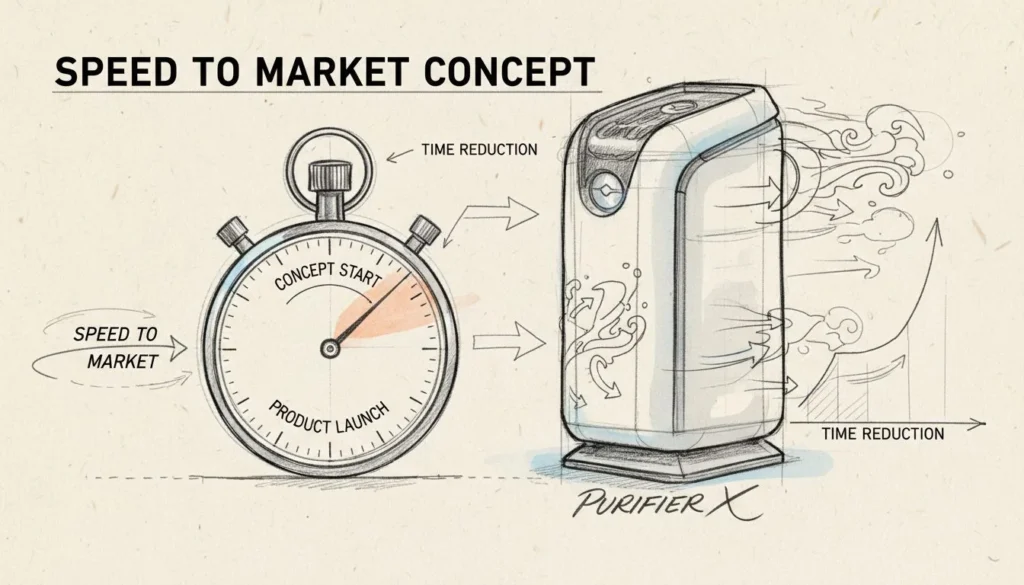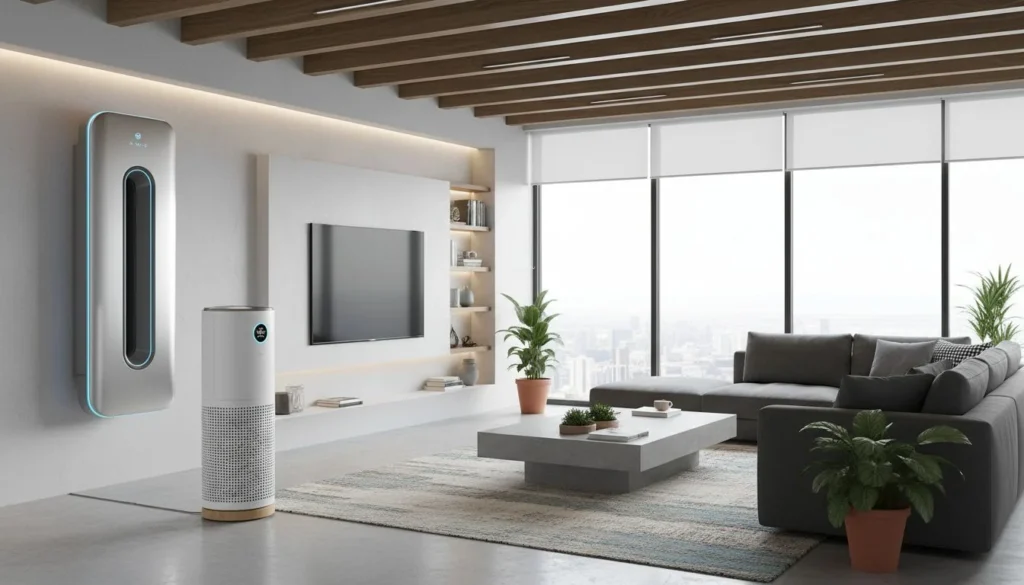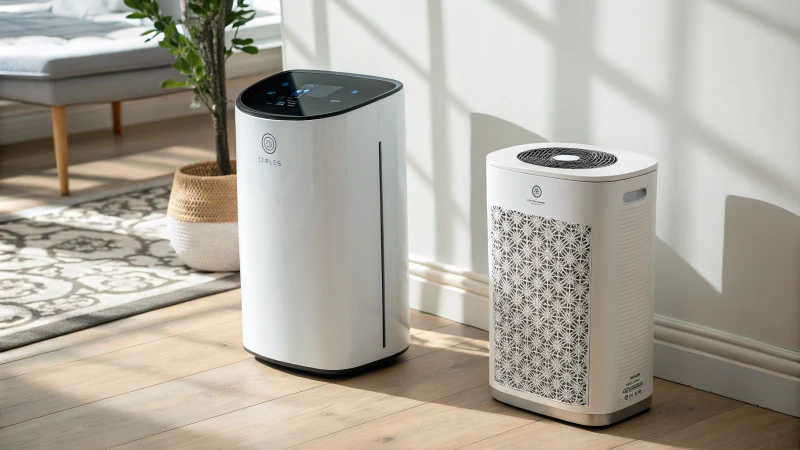
لطالما تساءلت عن مكافحة الهواء الملوث. ويزداد هذا الاهتمام عند البحث عن أفضل الآلات لتنقية الهواء. تحاول كل من الصين وباكستان جاهدتين ابتكار أفضل أجهزة تنقية الهواء. أيهما يتصدر؟
تهيمن الصين على إنتاج أجهزة تنقية الهواء بسبب تقنياتها المتطورة ومصانعها القوية. وقد أصبحت باكستان منافسًا لها. ويأتي هذا النمو من الطلب المحلي المتزايد والعلاقات الوثيقة مع الصانعين الصينيين.
بعد سنوات عديدة من دراسة تنقية الهواء، أعلم أن الصين رائدة في التكنولوجيا والإنتاج. إن ميزة الصين فريدة من نوعها. وفي الوقت نفسه، توفر السوق الباكستانية سريعة النمو والظروف التجارية الجيدة فرصًا مثيرة.
لقد زرت باكستان ذات مرة ورأيت الطلب الكبير على حلول الهواء النظيف. وكانت هذه علامة واضحة على خطورة مشكلة جودة الهواء هناك. أصبح الناس الآن أكثر تفهماً لهذه المشكلة. وقد يؤدي الوعي المتزايد إلى زيادة الإنتاج المحلي في باكستان. لننظر كيف تختلف هذه البلدان في الأفكار الجديدة والتكاليف وإمكانيات السوق.
الصين رائدة في تكنولوجيا تنقية الهواء.صحيح
تدعم التكنولوجيا والبنية التحتية المتقدمة في الصين ريادتها.
باكستان تتفوق على الصين في إنتاج أجهزة تنقية الهواء.خطأ
قاعدة التصنيع الراسخة في الصين تجعلها تتقدم على باكستان.
كيف تؤثر جودة الهواء على الطلب على أجهزة تنقية الهواء في الصين وباكستان؟
أتذكر اليوم الأول الذي فهمت فيه مدى أهمية الهواء النظيف حقاً. بدا لي الشارع في بكين حياً بالناس. كان الهواء كثيفًا، يكاد يكون ملموسًا. وقد أدرك الكثير من الناس في الصين وباكستان نفس الإدراك الآن. إنه أمر مهم حقًا.
في الصين وباكستان، تزيد جودة الهواء السيئة من الحاجة إلى أجهزة تنقية الهواء كثيرًا. يعرف الناس الآن المزيد عن مدى ضرر التلوث على الصحة. يبدو أن أجهزة تنقية الهواء مهمة للحفاظ على صحة المنزل. من الحقائق المهمة حقًا أن أجهزة تنقية الهواء تبدو مهمة.
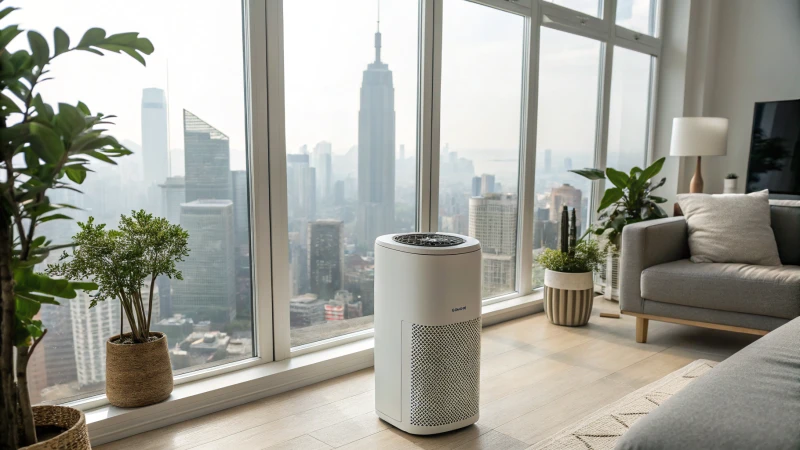
دور تلوث الهواء في زيادة الطلب على الهواء
تُظهر الزيارات إلى مدن مثل بكين ولاهور لماذا أصبحت أجهزة تنقية الهواء شائعة الآن في المنازل. فالنمو الصناعي السريع في الصين يؤدي إلى هواء سيئ، مما يخلق مخاوف صحية. فمشاهدة أفق ضباب دخاني يلتهم الأفق يُظهر بوضوح الحاجة الملحة إلى أجهزة تنقية الهواء. إن الحكومة الصينية1 كما نفذت سياسات لمعالجة تلوث الهواء، مما زاد من التأثير على سلوك المستهلك.
أما في باكستان، فللقصة الجوية في باكستان تحوّلاتها الخاصة. يتحدث الأصدقاء هناك عن الضباب الدخاني الكثيف الذي يجعل التنفس صعباً. ومع تفاقم المشاكل، يتعلم الناس أكثر عن الحاجة إلى هواء داخلي نظيف. وتتزايد هذه الحاجة إلى أجهزة تنقية الهواء في المنازل، وتلعب حملات التوعية العامة دورًا حاسمًا في هذا الصدد.
العوامل الاقتصادية المؤثرة في السوق
تنتج الصين أكثر من 70% من أجهزة تنقية الهواء في العالم. ومع ذلك، فإن التعريفات الجمركية وغيرها من المشاكل الاقتصادية تدفع البعض للتفكير في نقل المصانع. وذكر الزملاء فيتنام وماليزيا كمواقع جديدة محتملة، مدفوعين بالمشاكل التجارية.
وتمثل باكستان خياراً قابلاً للتطبيق للانتقال بسبب سوقها المتنامي وعلاقاتها المواتية مع الصين. ويمكن أن يؤدي بناء المصانع المحلية إلى تغيير اقتصادها. ولكن الحاجة إلى استيراد أجزاء مهمة من الصين، مثل المراوح ولوحات PCBA، قد يؤدي إلى إبطاء التقدم.
| البلد | ديناميكيات سوق أجهزة تنقية الهواء |
|---|---|
| الصين | منتج رائد؛ تحديات التعريفة الجمركية |
| باكستان | السوق المتنامية؛ الاعتماد على الاستيراد |
المخاوف الصحية وسلوك المستهلك
غالباً ما تقود المخاوف الصحية خيارات المستهلكين. في الصين، يعرف الناس الآن المزيد عن الهواء الفاسد ويريدون تكنولوجيا متقدمة مثل إلغاء الديسيبل™إلغاء الديسيبل2 لصحة أفضل
شهدت باكستان في الآونة الأخيرة زيادة سريعة في التلوث، مما خلق حاجة ملحة بين السكان المحليين. ويظهر البيع السريع لأجهزة تنقية الهواء هذه الحاجة. ومع ازدياد عدد الأشخاص الذين يتعلمون، سيزداد الطلب على هذه الأجهزة في المنازل.
تحولات السوق المحتملة
يمكن أن يؤدي نقل التصنيع إلى باكستان إلى تغيير السوق، مثلما تغير الفرص الجديدة الصناعات في أماكن أخرى. فالمصانع المحلية قد تخلق فرص عمل وتقدّم التكنولوجيا.
قد تجد الصين باكستان جذابة بسبب موقعها وتاريخها ولكن يجب عليها حل مشاكل البنية التحتية وبناء سلسلة توريد قوية أولاً.
يمكن للمهتمين بهذه التغييرات استكشاف العلاقة بين جودة الهواء واستخدام التكنولوجيا3 لمزيد من الفهم للعادات الاستهلاكية المتغيرة والتغيرات الاقتصادية.
تنتج الصين أكثر من 70% من أجهزة تنقية الهواء العالمية.صحيح
الصين منتج رائد، حيث تصنع أكثر من 70% من أجهزة تنقية الهواء في جميع أنحاء العالم.
تستورد باكستان جميع مكونات أجهزة تنقية الهواء محلياً.خطأ
تستورد باكستان المكونات الرئيسية مثل أنظمة المراوح ولوحات PCBA من الصين.
لماذا تعتبر الصين رائدة في تصنيع أجهزة تنقية الهواء؟
هل تعرف لماذا يختار الناس الصين في كثير من الأحيان أجهزة تنقية الهواء؟ تستحوذ الصين على 70% ضخمة من السوق العالمية. الكفاءة هي الدافع الحقيقي وراء هذا الاختيار. تدعم سلاسل التوريد القوية الإنتاج. تلعب المهارة التكنولوجية أيضًا دورًا كبيرًا.
تتصدر الصين إنتاج أجهزة تنقية الهواء. سلاسل التوريد الفعالة تساعد الصين كثيراً. التصنيع بأسعار معقولة يقلل من التكاليف. تساهم التكنولوجيا المتقدمة في نجاحها. منتجات عالية الجودة تأتي من الصين. تباع هذه المنتجات بأسعار تنافسية.
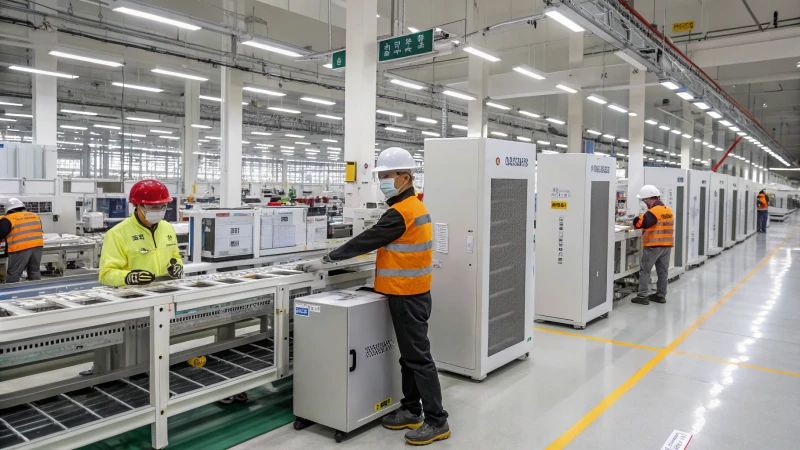
كفاءة التكلفة والنطاق
الصين قوية جدًا في تكنولوجيا تنقية الهواء بسبب كفاءة التكلفة. حيث تستفيد البلاد من وفورات الحجم، مما يسمح للمصنعين بخفض التكاليف لكل وحدة. كان هذا درساً تعلمته بالطريقة الصعبة في البداية. في الصين، هذا أمر طبيعي لأن لديهم العديد من الموارد، لذا فهم ينتجون المزيد بتكلفة أقل لكل وحدة.
| العامل | المزايا |
|---|---|
| وفورات الحجم | انخفاض تكلفة الوحدة الواحدة |
| وفرة الموارد | انخفاض أسعار المواد الخام |
| القوى العاملة الكبيرة | تكاليف العمالة الميسورة |
التكنولوجيا المتقدمة
تستثمر الصين بكثافة في البحث والتطوير، مما يؤدي إلى ابتكارات في تكنولوجيا أجهزة تنقية الهواء. أنا معجب بكيفية استخدامهم للتكنولوجيا الحديثة مثل إنترنت الأشياء والذكاء الاصطناعي في أجهزة تنقية الهواء. هذا النهج عالي التقنية يجعل الأجهزة أفضل ويناسب حبي للابتكار.
- تكامل إنترنت الأشياء: يسمح بالمراقبة والتحكم في الوقت الفعلي.
- ميزات الذكاء الاصطناعي: التنبؤ بجودة الهواء وتحسين الأجهزة.
يضمن هذا الالتزام للمصنعين الصينيين تقديم منتجات متطورة4 التي تفي بالمعايير الدولية.
سلسلة التوريد الشاملة
أنا أحترم كثيراً سلسلة التوريد في الصين؛ فهي تعمل بشكل جيد لدرجة أنها تذكرني عندما يكون كل شيء متناسقاً تماماً. فالمورّدون والمصنعون قريبون من بعضهم البعض، وبالتالي يحصلون على قطع الغيار بسرعة، مما يقلل من المهل الزمنية ويقلل من التكاليف اللوجستية. وبالإضافة إلى ذلك، فإن دعم الحكومة للصناعات التحويلية يعزز من مرونة سلسلة التوريد5.
النظام البيئي التعاوني
التعاون يجلب النجاح. وأرى ذلك في شبكة الصين القوية حيث تعمل شركات التكنولوجيا والمصانع معًا. هذا العمل الجماعي يخلق ميزات منتجات جديدة وجودة أفضل.
- شراكات مصنعي المعدات الأصلية: السماح بالنمو السريع وتخصيص المنتج.
- التعاون التقني: تؤدي إلى الابتكار ومنتجات أفضل.
إن التفكير في نقاط القوة هذه يذكرني بالسبب الذي دفعني إلى المغامرة في مجال هندسة حماية البيئة - فالرغبة في الابتكار وتحسين جودة الهواء هي ما يدفعني يومياً.
أجهزة تنقية الهواء في الصين تستخدم إنترنت الأشياء للمراقبة في الوقت الفعلي.صحيح
تدمج الشركات المصنعة الصينية تقنية إنترنت الأشياء لتعزيز وظائف أجهزة تنقية الهواء.
تفتقر الصين إلى نظام بيئي تعاوني في مجال التصنيع.خطأ
يستفيد التصنيع في الصين من نظام بيئي تعاوني يعزز الابتكار.
هل باكستان على وشك أن تصبح لاعباً رئيسياً في سوق أجهزة تنقية الهواء؟
تخيل أنك تقيم في مدينة يبدو كل نفس فيها وكأنك تستنشق عادم سيارة.
تتمتع باكستان بإمكانيات كبيرة لتصبح منافسًا رئيسيًا في صناعة أجهزة تنقية الهواء. يؤدي تلوث الهواء المتزايد إلى ارتفاع الطلب المحلي. يزيد تلوث الهواء الشديد بالفعل من الحاجة إلى أجهزة تنقية الهواء. علاوة على ذلك، تمنح التغييرات في التصنيع من الصين المزيد من الفرص للنمو. وتوفر هذه التحولات إمكانيات حقيقية.
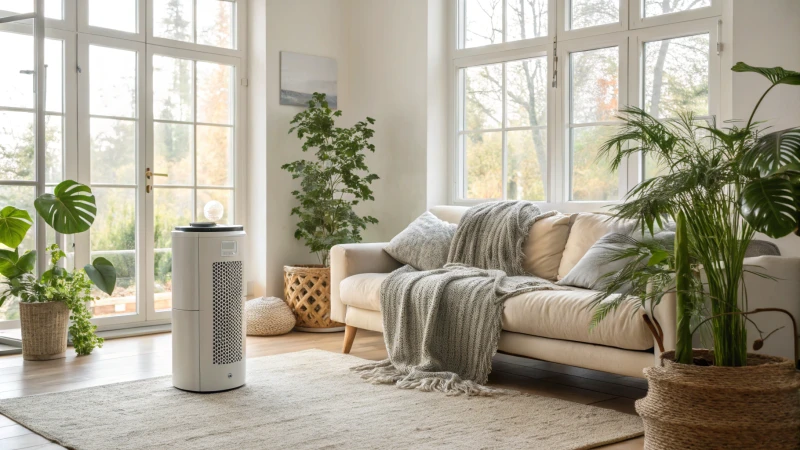
الحاجة المتزايدة في باكستان
لقد رأيت شوارع لاهور وكراتشي المزدحمة. يبدو الهواء ثقيلاً. تلوث الهواء هنا ليس مجرد أرقام، بل يؤثر حقًا على الحياة اليومية. تستمر مستويات التلوث في الارتفاع. يرغب الكثير من الناس الآن في الحصول على أجهزة تنقية الهواء. ألاحظ أن المزيد من العائلات في منطقتي تحصل على هذه الأجهزة. المخاوف الصحية تدفع حقاً إلى هذا الخيار. يدل هذا التغيير على الوعي وربما ارتفاع كبير في السوق المحلية6.
فرص التصنيع
التجارة العالمية تؤثر على الأسواق المحلية. الصين تتصدر إنتاج أجهزة تنقية الهواء ولكنها تواجه تعريفات جمركية أمريكية. يبحث المصنعون عن أماكن جديدة. وتصبح باكستان، مع ارتباطها بالصين، خياراً مثيراً للاهتمام.
| البلد | الدور الحالي | الاحتمالات |
|---|---|---|
| الصين | الشركة المصنعة الرائدة | نقل المصانع |
| باكستان | الأسواق الناشئة | مركز تصنيع محتمل |
يمكن أن تنمو صناعاتنا بالفعل إذا تحول الإنتاج هنا. إنشاء شركة محلية سلسلة التوريد7 تجلب العقبات، ولكن هذه الفكرة مثيرة وتستحق التفكير فيها.
التحديات والأفكار
الأمر ليس سهلاً. البنية التحتية لدينا ليست جاهزة لإنتاج أجزاء مثل لوحات PCBA وأنظمة المروحة. شارك أحد رجال الأعمال المحليين أن هذه المشاكل قد تبطئ النمو. ولكن مع الاستثمارات الصينية، أشعر بالأمل. يمكننا أن نبني ببطء صناعة محلية قوية.
مزايا اللاعبين العالميين
بالنسبة للشركات الكبرى مثل هيسو إير8، فإن القدوم إلى باكستان يوفر الدخول إلى سوق متنامية. وقد يقلل من تكاليف التصنيع أيضاً. وتتمثل أهدافهم في الاستدامة والابتكار، وهو ما يتماشى مع هذه الفكرة.
إن مواجهة هذه الأوضاع يعطي مزيجًا من الفرص والمشاكل. ومن خلال التخطيط الذكي والاستثمارات الذكية، يمكن لباكستان أن تلعب دورًا كبيرًا في سوق أجهزة تنقية الهواء، مما يعود بالنفع على المشترين المحليين والمنتجين العالميين على حد سواء.
يرجع الطلب على أجهزة تنقية الهواء في باكستان إلى ارتفاع نسبة التلوث.صحيح
وتواجه المدن الكبرى مثل لاهور وكراتشي تلوثاً خطيراً وزيادة في الطلب.
تقوم باكستان حالياً بتصنيع معظم أجهزة تنقية الهواء محلياً.خطأ
تفتقر باكستان إلى البنية التحتية للمكونات الرئيسية، وتعتمد على الاستيراد.
كيف تؤثر التعريفات الجمركية والعلاقات التجارية على إنتاج أجهزة تنقية الهواء؟
تخيل نفسك تتحرك في عالم التجارة العالمية المعقد. قد تغير التعريفات الجمركية فجأة كل شيء، خاصة بالنسبة لأولئك الذين يبيعون أجهزة تنقية الهواء. تلعب هذه القوى الاقتصادية دورًا كبيرًا في صناعتنا. دعونا نستكشف كيف يفعلون ذلك.
تؤثر التعريفات الجمركية والعلاقات التجارية بقوة على إنتاج أجهزة تنقية الهواء. وتشعر التكاليف وسلاسل التوريد والوصول إلى الأسواق بهذا التأثير بعمق. ويؤدي هذا التأثير إلى تغيير مواقع الإنتاج. تتغير استراتيجيات التسعير أيضًا.
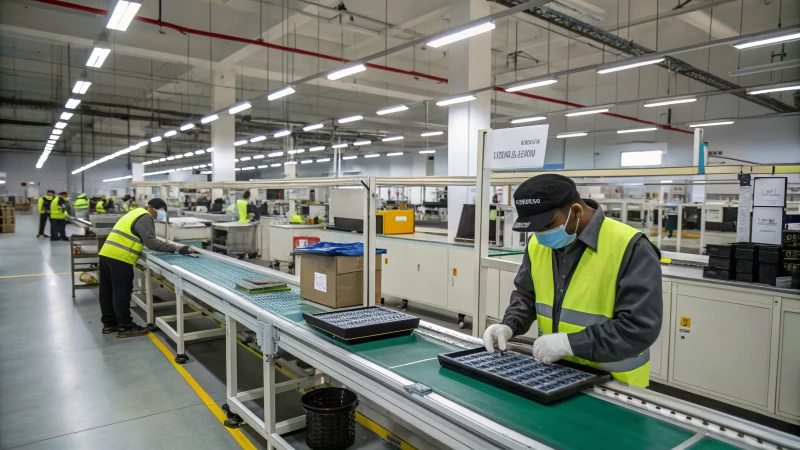
دور التعريفات الجمركية في تصنيع أجهزة تنقية الهواء
أتذكر اليوم الذي غيرت فيه الرسوم الجمركية الأمريكية على الواردات الصينية كل شيء. فبالنسبة لمصنع أجهزة تنقية الهواء، يبدو الأمر وكأنه رحلة أفعوانية لا نهاية لها. الرسوم الجمركية هي ضرائب على البضائع التي يتم جلبها إلى بلد ما. إنها تغير بالفعل تكلفة الأشياء. العديد من الشركات الصينية9التي تواجه الرسوم الجمركية الأمريكية المرتفعة، ربما ينقلون مصانعهم لتخطي هذه الرسوم الكبيرة. فكّر في أن تكون في موقفهم - اتخاذ قرار نقل مصنع بأكمله هو أمر ضخم. يؤثر هذا التحول كثيرًا على كيفية تحديد الأسعار والمنافسة في السوق.
العلاقات التجارية وديناميكيات السوق
تتحكم العلاقات التجارية في ما يحدث في السوق، مثل القوى السرية. عندما يظهر التوتر بين دول مثل الولايات المتحدة والصين، غالباً ما يبحث المصنعون عن خيارات أكثر أماناً. تنشئ بعض الشركات في أماكن مثل فيتنام أو باكستان10 ليس فقط للهروب من التعريفات الجمركية ولكن أيضًا لدخول أسواق جديدة حيث يهتم الناس أكثر بالتلوث. فالطلب يتزايد هناك، وليس فقط خفض التكاليف؛ وإيجاد فرص جديدة هو محور التركيز عندما تتاح لهم.
| البلد | سبب النقل | المزايا |
|---|---|---|
| فيتنام | تجنب التعريفات الجمركية الأمريكية | تكاليف عمالة أقل، وموقع استراتيجي |
| باكستان | السوق المحلية المتنامية، والروابط التاريخية | القرب من الأسواق الناشئة |
تعديلات سلسلة التوريد
إن نقل الإنتاج لا يتعلق فقط بنقل المواقع، بل هو إنشاء مكان جديد لسلسلة التوريد. إنه تجديد لمنزل قديم؛ فكل جزء يحتاج إلى مصادر جديدة، مثل أنظمة المروحة ولوحات PCBA، خاصة في أماكن مثل باكستان11. إن إنشاء سلسلة التوريد القوية هذه أمر بالغ الأهمية لتحقيق النجاح الدائم.
الآفاق المستقبلية والتخطيط الاستراتيجي
في ظل المشهد الجيوسياسي المتغير، فإن المرونة هي المفتاح. يجب على المصنعين ليس فقط التحول ولكن أيضًا التطلع إلى الأمام، والتخطيط بعناية لما هو قادم. من المحتمل أن يكون استكشاف أسواق جديدة وشراكات وتطوير تكنولوجيا تنقية الهواء خطوات مهمة. يركز العالم بشكل أكبر على الاستدامة - يجب ألا يضر الهواء النظيف بالكوكب.
معرفة هذه العوامل تساعد شركات مثل هيسو إير12 البقاء في المقدمة نحاول حقًا أن نكون في الصدارة بحلول حديثة في مجال أجهزة تنقية الهواء. وبغض النظر عن مكان الإنتاج، نهدف إلى أن نكون دائمًا في طليعة الابتكار.
تزيد التعريفات الجمركية من تكاليف إنتاج أجهزة تنقية الهواء.صحيح
التعريفات الجمركية هي ضرائب على الواردات، مما يرفع تكلفة مدخلات التصنيع.
الشركات الصينية تتجنب التعريفات الجمركية الأمريكية عن طريق الانتقال إلى مكان آخر.صحيح
يساعد الانتقال إلى دول مثل فيتنام على تجاوز الرسوم الجمركية الأمريكية.
الخاتمة
تتصدر الصين الإنتاج العالمي لأجهزة تنقية الهواء بتكنولوجيا متقدمة، في حين أن الطلب المتزايد في باكستان وإمكانات التصنيع المحلي تقدم فرصًا جديدة وسط تزايد المخاوف من التلوث.
-
اكتشف كيف تهدف السياسات الصينية إلى الحد من التلوث وتعزيز التقنيات الأنظف. ↩
-
اكتشف كيف تعمل التقنيات المتقدمة مثل إلغاء الديسيبل على تحسين أداء جهاز تنقية الهواء. ↩
-
تعرف على كيفية تأثير تدهور جودة الهواء على اعتماد تقنيات تنقية الهواء الجديدة. ↩
-
استكشف أحدث الابتكارات التكنولوجية للمصنعين الصينيين. ↩
-
اكتشف كيف تستفيد سلاسل التوريد الفعالة في الصين من التصنيع الإلكتروني. ↩
-
فهم كيف يؤدي تلوث الهواء إلى زيادة الطلب المحلي على أجهزة تنقية الهواء. ↩
-
تعرف على العقبات اللوجستية في إعداد الإنتاج المحلي. ↩
-
اكتشف كيف يمكن للشركات الاستفادة من دخول أسواق جديدة. ↩
-
يستكشف كيف تؤثر التعريفات الجمركية بين الولايات المتحدة والصين على تكاليف التصنيع والقرارات. ↩
-
يناقش الطلب المتزايد على أجهزة تنقية الهواء في باكستان بسبب زيادة الوعي بالتلوث. ↩
-
يدرس المشاكل اللوجستية التي تواجهها عند نقل مرافق الإنتاج إلى باكستان. ↩
-
يقدم نظرة ثاقبة على نهج شركة هيسو إير في الحفاظ على مكانتها في السوق وسط التغيرات العالمية. ↩



